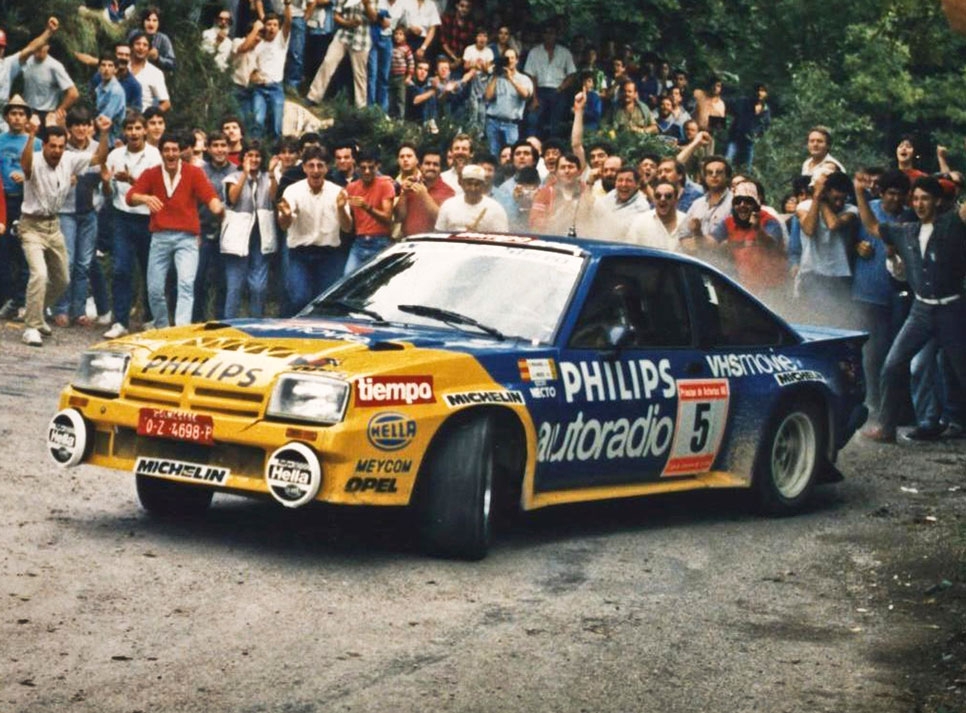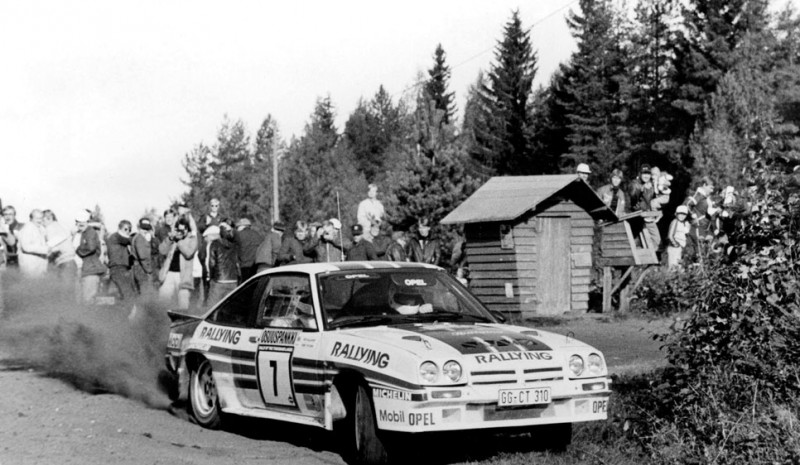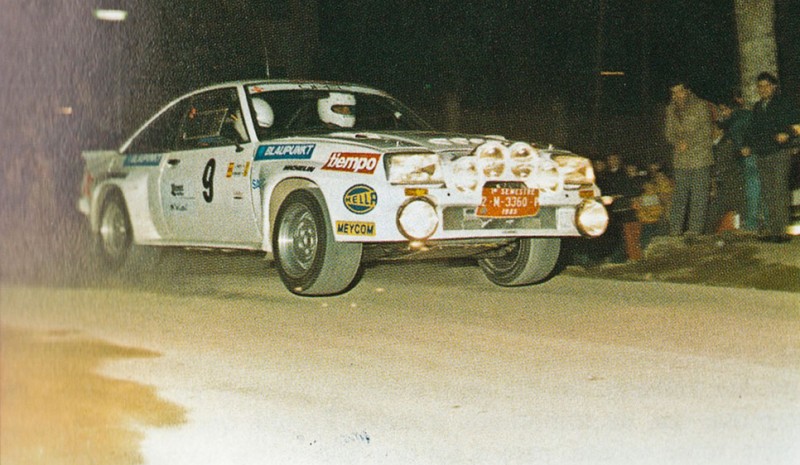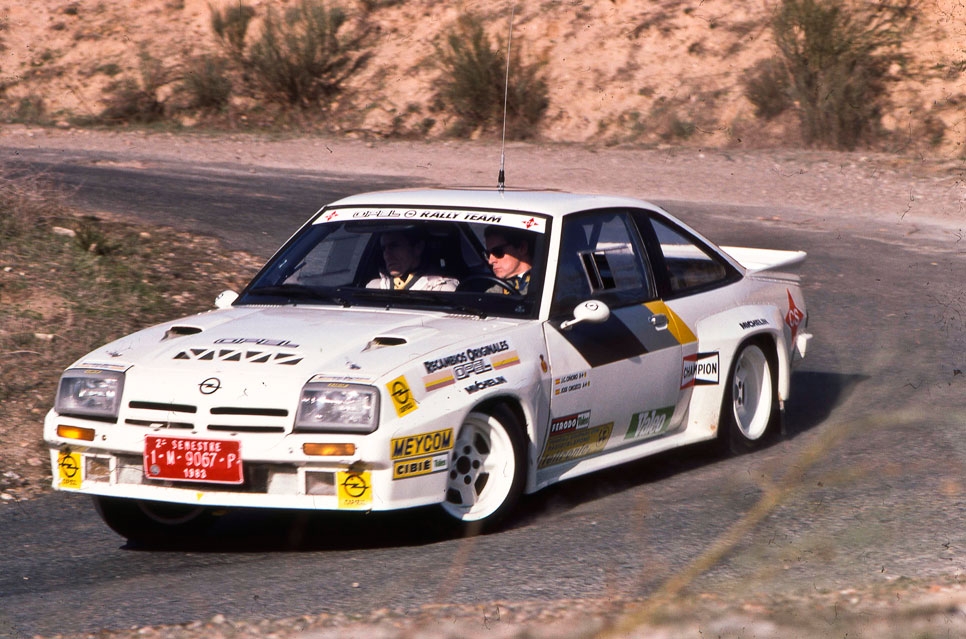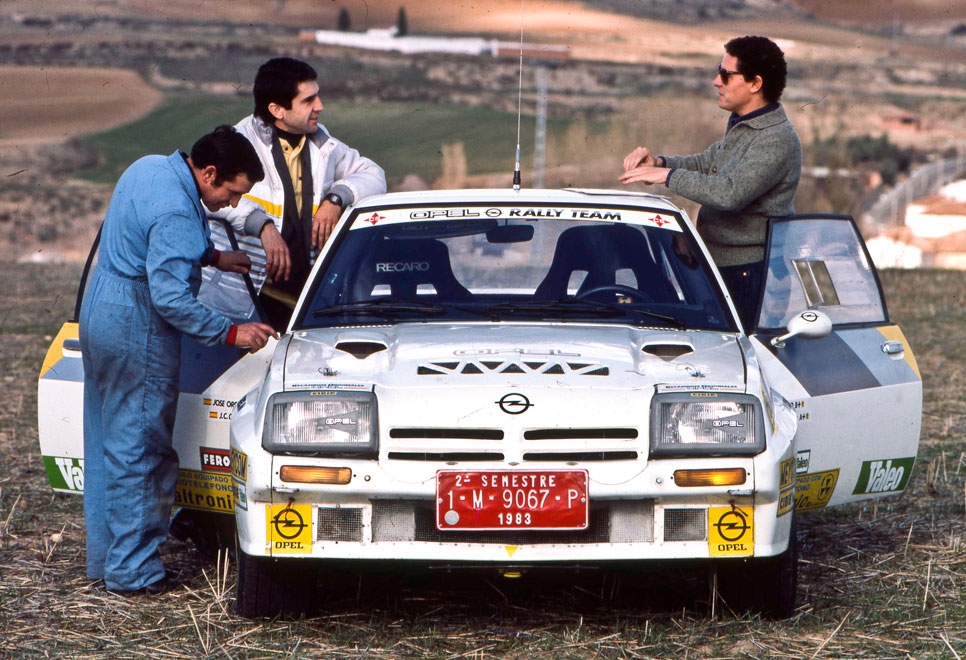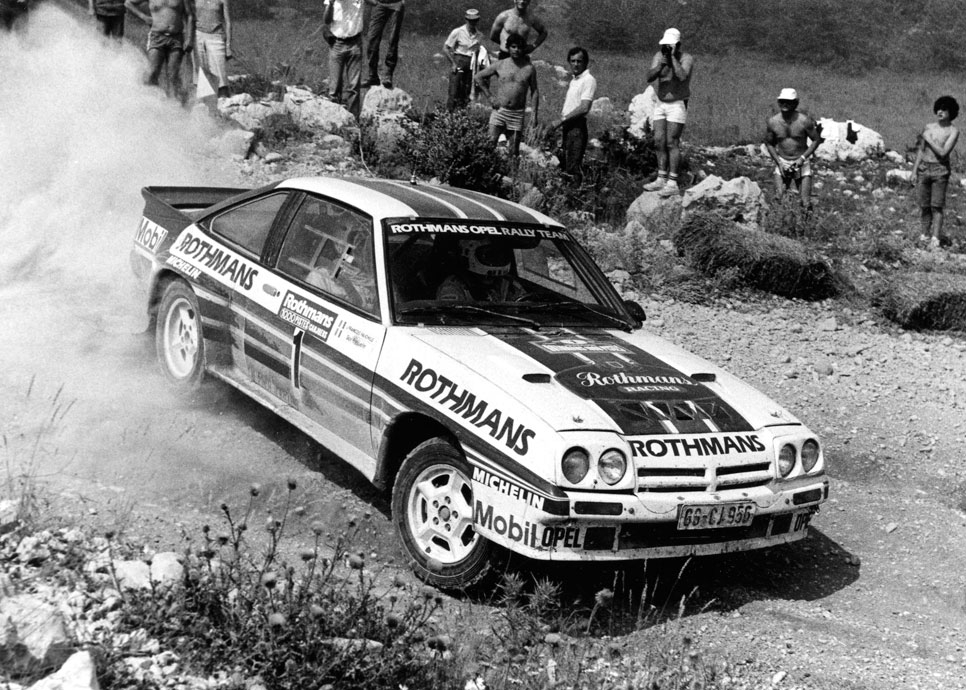classic test: Opel Manta 400 Gr B, panzer.
Reputed for its ruggedness and superbly driven, the Opel Manta 400 were from May 1983 substitutes the Ascona 400, who had managed the 1982 World Cup, with the icing on a victory in the Monte Carlo.
During the Second warMorld all car companies were engaged in the manufacture of military mills, and so, until the mid fifty, He did not start the industrial boom of European automobile factories. In Germany, Opel He began the flight with the Rekord, thinking mainly to robust car. Then came the Kadett and the Ascona, always with the same main feature: solidity.
With the engine of Europe, rally became popular and the speed and reliability of the cars became one of the main arguments of sales, pleaded guilty to the success of models such as Mini, Escort, Renault 8Gordini, Lancia Fulvia, etc, etc, and supported by their sporting success. However, despite the German management, Opel, as General Motors group company, it was American, and the rallies in America were unknown. Therefore mark Rüsselsheim He never used fully and directly in the rally.
They had to be importers in various European countries, which insist and alentasen creation Opel Händler Euro Team, mostly subsidized by the network of dealers. After making the run with different fate Kadett Gr.2, passage 16-valve engines of Gr.4 in 1976 did not bring the expected success and decided to lower the bar of units focusing on the European and various national competitions. This also led to the departure of the German team Walter Röhrl, one of the strongest drivers of the 70s and 80s, who happened to Fiat.
The evening withdrawal in 1977 left Opel centered models Gr.1, which, not surprisingly, harvested countless victories. While some teams Swedish, French and Italian Conrero were running the Group 2 mainly in their national championships. He Opel Opel Händler Euro Team He returned to the charge with new Ascona 2 liters Gr.2, winning the European front of Zanini in 1979 with Jochi Kleint at the wheel.
With the victories came new ambitions and aspirations of the World, for which developed a Gr.4 2,400 cc and 240 CV. He Ascona 400 He debuted in November 1979 at the RAC in Britain. In 1982, in addition to triumph in Monte Carlo, the recovered Walter Röhrl won the coveted world title, ahead of French Michelle Mouton, leading the revolutionary Audi 4×4 Turbo, brand that Röhrl He spent the following season.
In 1983, on May 1, was approved the Blanket 400 Gr.B, with the same engine, virtually the same specifications -the power had gone up to 276 hp– and like handling the Ascona 400. Rothmans tobacco advertising, he allowed Opel to continue in the championship with two drivers of the caliber of Henri Toivonen and Ari Vatanen. But the successes were not expected and new goals focused on national competitions and European, who had won the Italian “Tony” in 1982. The arrival of the monstrous Gr.B, left conservatives Blanket away from the monsters of all-wheel drive, turbocharged engines and higher powers to 400 hp, they were banned after several accidents in late 1986.
In Spain, history Opel He continued racing parallel to European. The Kadett They were popular in the late 70s, highlighting your flyer José Luis Sallent. With the arrival of the Ascona, pilots emerged as Jaume Pons, Mariano Lacasa, Joan Franquesa, Andorran Carles Santacreu and etc. By losing his contract with Rothmans, “Beny” Fernández He had a short career with Ascona Gr.2, which served to bring positions with GM, where he was considering mounting an official team. The transaction was completed in late 1983 with the hiring of Juan Carlos Oñoro as an official driver. At the beginning of this year, Salvador Servia, he just left Ford, He participated in Montecarlo with Ascona 400 prepared by Conrero. One year later, with the Manta 400, Servia He managed to win the Prince of Asturias and Catalonia.
In the latter test, the official team, who had not expected the successes achieved throughout the season, decided to give his Manta 400 prepared by Meycom the star of rally Spanish of the moment: Carlos Sainz. With little training in the Opel equipped with a Cosworth engine, Sainz had to bow to the Manta-Conrero tuned Servia. The 1984 event went to the hands of Zanini and his Ferrari 308, ahead of Manta Servia, being third another Opel Ascona 2 liters of Carles Santacreu.
Looking to 1985, Opel Spain He hired “Beny” Fernández in a year in which the Lancia 037 completely dominated the European Championship and Spain, where Carlos Sainz, because of a disagreement with Opel, Renault finished fichando flag with which he carried out a brilliant season despite the difficulty of tuning R5 Maxi-Turbo. The year ended with "Beny" Fernandez and beaten by Manta 400 037 Servia and R5 Maxi Sainz at the top of the Spanish contest. Very focused on the Canary tests, Alonso Lamberti He caught on good races at the wheel of another Manta 400, while José Arqué chained a series of good ratings with Manta 2 liters Gr.2.
In 1986 they followed the performances of Opel Spain with “Beny” Fernandez and Manta 400, which again struck at the National with the same enemies of the previous season: Servia and Sainz and their respective Lancia Y Renault. Opel, although the department depended on Luis Díaz Gras, the daily controlled it Juan Petisco, Jose Lopez Orozco and finally Antonio Boto three reputed co past the other side of the barrier. Championship ended as above, with “Beny” back in third position, but ahead of Antonio Zanini and Ford RS 200. In Spain Cup Rally Lamberti did manage victory with Manta 400 Conrero while Vicente Cabanes with a Blanket 2 liters and Fidel de La Peña with another Opel, still defending the colors of Opel.
Because of the ban Gr. B in late 1986 and the establishment of the new Spanish championship reserved for Gr. A, Opel-Spain decided to run with Kadett GT / E Gr. A front-wheel drive. The blanket 400 were then derived to Spain Championship Rally Earth, in which Juan Carlos Oñoro Yes he got the win that same inaugural season. Eventually, the official Manta 400 prepared by Meycom He continued to compete under the Andalusian contest of speed in the hands of José Macías.
Driving the Manta 400, with “Chang-Lyn” right
during my 40 years of journalist, I am honored and fortunate to have proven the vast majority of cars rally from the 70s up to two and a half years ago. And not just any car, but, in general, official cars own brands and, often, with the honorable but uncomfortable company world champions carving Munari, Biasion, Waldegaard, Kankkunen, Röhrl, Alen, Sainz, Loeb, Hirvonen and some others.
I think in Spain tried them all, especially since until 1990, when running as a pilot, no less team leaders that they had all been or my bosses or my co-pilot (Petisco, Boto, Lopez-Orozco, Aracil), They put the lower paste. So when in 1983 Opel rode his department, Juan Petisco offered me the official Manta 400 to prove it. Juan Carlos Oñoro, his driver, my friend and former co-pilot, came to help the “joint-letters” to try your car.
As were so many cars, I presume to have a selective memory. Right away I see this going well, but that this or that car is better or worse, and runs more than this or that and has or is more or less comfortable than others in its class. Moreover, after 366 runs under my belt, I have an equally test in the ass, and apart from the official data, I calculate more or less powers announced, most of the time very optimistic.
So, to test the Manta 400, a time when Renault had a Tour de Corse very powerful R5, Lancia one superefectivo in virados sections 037 and weighing more than 800 kilos and, of course, there were plenty of competitive 911 SC, the 1,100 kilos blanket 400 and 276 hp I think we were less than 230/240 hp in the best of cases left a rather poor impression. So I told you Oñoro and, without denying or confirming anything, said it was what he had. Yes, the car was very easy to drive, almost too much. He gave a great impression of solidity, and even, strangely, his change Getrag had sincros, at a time that Abarth and Hewland -more rápidos- boxes had not, since the time of the Colotti of Seat 124 of the ’70s …
I remembered that Walter Röhrl He had told me that the more difficult was the terrain better times were made with the Blanket. And it was true, because its main feature was that: its driveability, despite its larguísimo front hood. Created for tough World Rally Championship in Spain, however, he could do little, despite the efforts of Oñoro and “Beny” being Servia (wearing a Conrero) party which took him more. And in that time, recently appeared the 4×4 turbo, competition was one step ahead.


